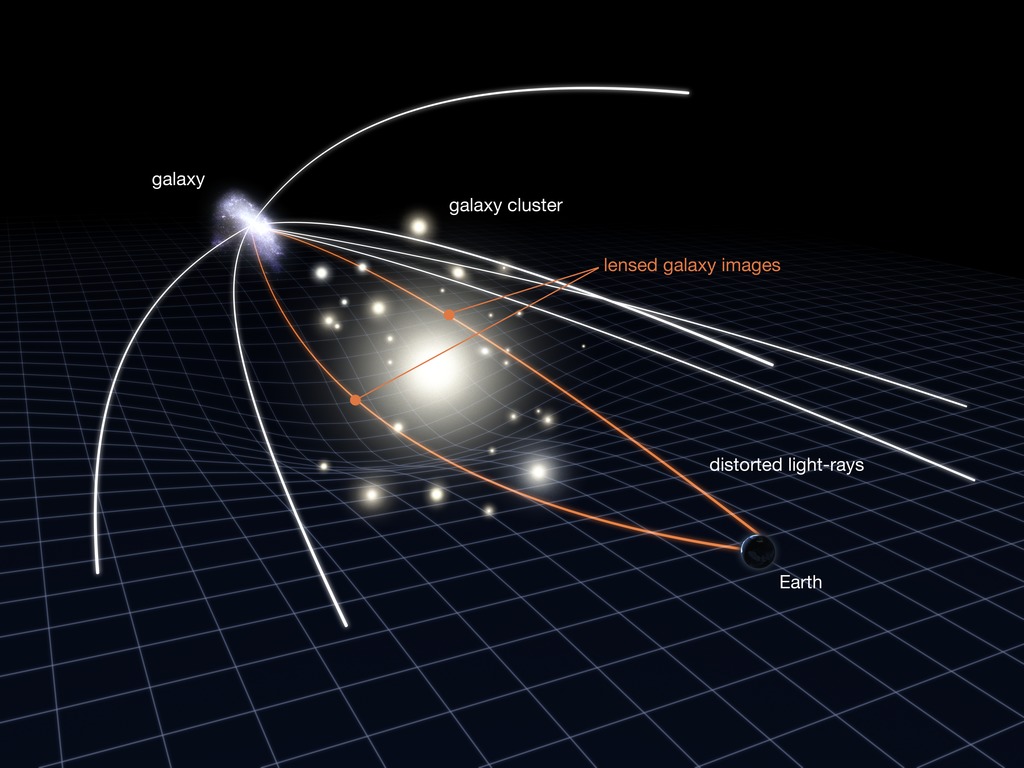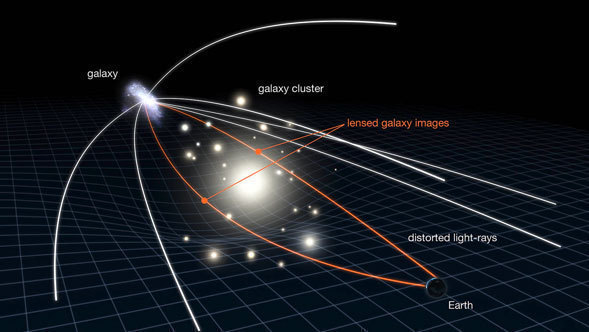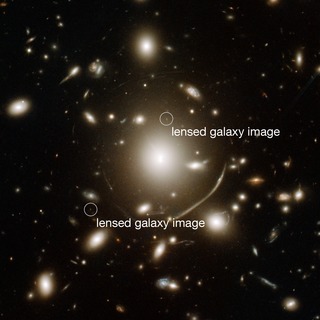
Credit: NASA, ESA & L. Calcada
Artwork • April 12th, 2011 • ssc2011-05b
ssc2011-05b
This illustration shows a phenomenon known as gravitational lensing, which is used by astronomers to study very distant and very faint galaxies. Note that the scale has been greatly exaggerated in this diagram. In reality, the distant galaxy is much further away and much smaller.
Lensing clusters are clusters of elliptical galaxies whose gravity is so strong that they bend the light from the galaxies behind them. This produces distorted, and often multiple images of the background galaxy. But despite this distortion, gravitational lenses allow for greatly improved observations as the gravity bends the lights path towards Hubble, amplifying the light and making otherwise invisible objects observable.
A team of astronomers has used Abell 383, one such gravitational lens, to observe a distant galaxy whose light is resolved into two images by the cluster. The gravitational lensing effect means that astronomers have been able to determine fascinating insights about the galaxy that would not normally be visible even with Hubble or large ground-based telescopes. Among their discoveries is that the distant galaxys stars are very old, meaning that galaxies probably formed earlier in cosmic history than we first thought.
About the Object
- Name
- Type
- Galaxy > Type > Gravitationally Lensed
- Galaxy > Grouping > Cluster






